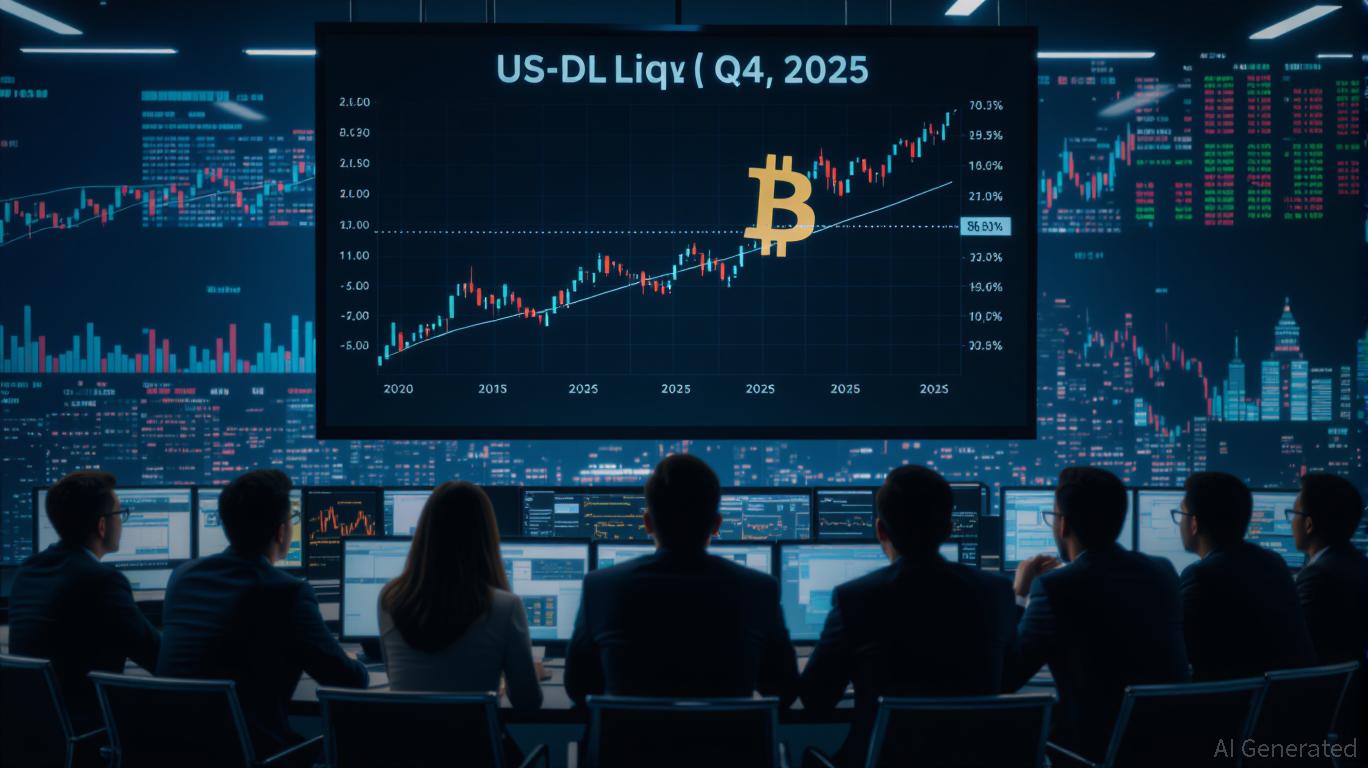Bitcoin's Value Soars in November 2025: Key Macroeconomic Drivers and Growing Institutional Embrace
- Bitcoin's November 2025 surge was driven by U.S. government shutdown-induced liquidity shifts and institutional adoption of ETFs. - BlackRock's ASX Bitcoin ETF launch and JPMorgan's $343M IBIT holdings signaled growing institutional confidence in crypto. - Harvard's $100M ETF allocation and staking-based products like Bitwise's Solana ETF highlight systematic capital inflows into crypto. - Despite $578M ETF outflows in November, Bitcoin's correlation with liquidity (0.85) and global regulatory alignment
Macroeconomic Drivers: Liquidity and the U.S. Government Shutdown
The shutdown of the U.S. government, which started on October 1, 2025, served as a major economic trigger. By locking up hundreds of billions of dollars in the Treasury General Account (TGA), the shutdown reduced available liquidity in the markets, leading to a 5% drop in Bitcoin’s value during that time, according to a
The relationship between Bitcoin and dollar liquidity, tracked by the USDLiq Index, remains strong at 0.85—one of the highest correlations among asset types, according to Yahoo Finance. This indicates that Bitcoin’s price is increasingly linked to broader monetary trends, similar to patterns seen in stocks and commodities. As the TGA balance steadied in late October, optimism about improving liquidity began to lift Bitcoin’s price, paving the way for its November rally.

Institutional Involvement: ETFs and Steady Capital Flows
While macroeconomic factors set the context, it was the influx of institutional investment that became the main engine behind Bitcoin’s continued climb. The debut of BlackRock’s iShares Bitcoin ETF (IBIT) on the Australian Securities Exchange (ASX) in mid-November 2025 represented a significant breakthrough. With a management fee of 0.39%, this ETF mirrored its U.S. version, which had accumulated more than $98 billion in assets since its launch in 2024, as reported by a
JPMorgan’s move to increase its holdings in BlackRock’s IBIT by 64% in the third quarter of 2025, reaching $343 million, further highlighted this trend, even as CEO Jamie Dimon remained publicly skeptical, according to a
The story of institutional adoption goes beyond just ETFs. Matt Hougan, Chief Investment Officer at Bitwise Asset Management, noted that the market is shifting from retail-driven speculation to more systematic allocation strategies, according to a
Weighing Optimism Against Risks
Despite the prevailing
Conclusion: Bitcoin Enters a New Phase
The surge in Bitcoin’s price in November 2025 signals a more mature market environment. While short-term volatility is still shaped by macroeconomic events—especially liquidity cycles tied to government spending—the foundation for long-term stability is being laid by institutional infrastructure, including ETFs, staking products, and harmonized global regulations. The launch of BlackRock’s ETF on the ASX and JPMorgan’s increased holdings show that Bitcoin has moved beyond being a speculative outlier to become a central part of diversified investment portfolios. The coming period will reveal whether this wave of institutional support can maintain Bitcoin’s momentum as broader economic conditions continue to evolve.
Disclaimer: The content of this article solely reflects the author's opinion and does not represent the platform in any capacity. This article is not intended to serve as a reference for making investment decisions.
You may also like
DASH Aster DEX Listing: Could This Transform the Future of Decentralized Finance?
- Aster DEX, a hybrid DeFi perpetuals exchange, combines AMM and CEX features with multi-chain support (BNB, Ethereum , Solana) and a yield-collateral model offering 5–7% asset returns. - Post-TGE, its TVL surged to $17.35 billion within a month, driven by institutional backing (Binance, YZi Labs) and 1001x leverage in "Simple Mode," surpassing sector averages. - DASH token saw 1,650% TGE growth but stabilized at $1, reflecting speculative volatility, while institutional investors expressed cautious optimi

Vitalik Buterin's Promotion of ZK-SNARKs and the Transformation of Blockchain Infrastructure
- Vitalik Buterin advocates ZK-SNARKs optimization via modexp precompile removal, prioritizing Ethereum's ZK scalability over niche use cases. - Fusaka upgrade introduces PeerDAS, reducing data verification costs and doubling blob capacity to enhance L2 efficiency and attract enterprise adoption. - Zcash (ZEC) surges 400% while Immutable (IMX) and Hyperliquid gain traction, signaling ZK-SNARKs' expanding influence beyond Ethereum's ecosystem. - Investors face ROI potential in ZK infrastructure but must nav

How emerging companies can attract top talent ethically without the financial resources of major tech firms